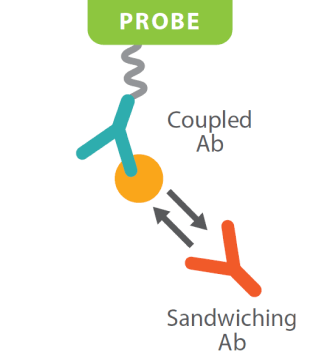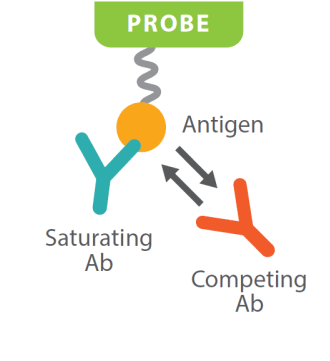Know more. Go further.
Epitope Binning
Epitope Binning
Knowing the epitope of an antibody is crucial to understanding its biology and therapeutic potential. Running epitope binning analysis earlier in the drug discovery pipeline can save time and increase efficiency.
Gator® BLI can handle crude supernatants to allow epitope binning at the earliest drug discovery phase. Intellectual property rights can be known earlier to make sure you stand out among competitors.
Epitope binning shouldn’t be hard to set up or analyze. With Gator® BLI, assay templates are pre-built to run, and data analysis takes just one click. Whether you’re running the sandwich or tandem format, Gator® can be used to screen your antibodies. Real-time and fluidics-free, the Gator® system enables rapid epitope binning without the difficulties of other label-free methods.
Benefits of Gator Bio Epitope Binning

Rapid assay setup

Single-click data analysis

Rich data sets

Crude or purified samples

What is epitope binning?

Classical Sandwich
In a classical epitope binning sandwich assay, an antibody is first immobilized on the biosensor surface, followed by the antigen, and then the second antibody. Generally Anti Mouse-Fc or Anti Human Fc biosensors are used for this method.

In-Tandem
In a tandem epitope binning assay, the antigen is first immobilized on the biosensor surface, followed by the two antibodies in sequence. Generally, Anti-His or Streptavidin biosensors are used to capture the antigen.


